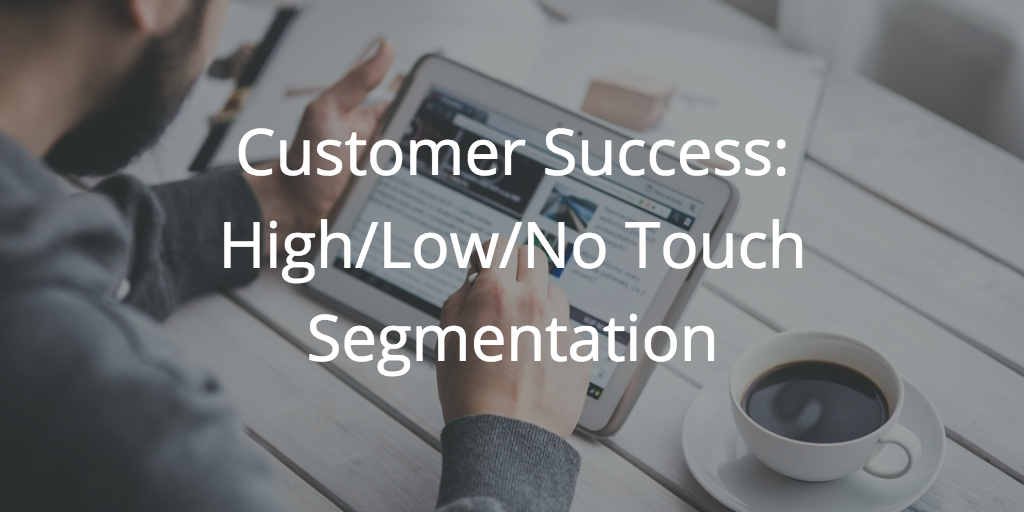 The traditional Customer Success method of simply looking at what a customer pays us and giving them a particular level of ‘touch’ is old and outdated. It’s time to logically segment customers based on Appropriate Experience (AX).
The traditional Customer Success method of simply looking at what a customer pays us and giving them a particular level of ‘touch’ is old and outdated. It’s time to logically segment customers based on Appropriate Experience (AX).
For context, on Friday, May 19, 2017, I did a Customer Success Ask Me Anything (AMA) on Facebook live. It was awesome. The video is embedded below and below that is the transcript (edited for better readability) that answers the question.
How to implement High/Low/No-touch Segmentation?
Do other companies segment their customers between high touch/low touch, and if so, what is their criteria?
It’s funny when I talk to a company about their Customer Success, I can almost always tell where they learned about Customer Success. And it’s usually a software vendor that they’ve learned from. And you can tell based on the language they use which one it is.
And a lot of its high/low. If its tech touch, I can probably figure out what software vendor you were talking to. Not that that’s a problem, except that it doesn’t, this high/low no touch doesn’t paint the right picture. It doesn’t really give us the accurate way of looking at our customers. You should be segmenting your customers based on their Appropriate Experience. If you’re not basing, if you’re not doing that, you’re doing it wrong.
Three or four years ago, maybe we would have said segment based on Annual Recurring Revenue (ARR) and ARR potential. But we were just kids back then. We didn’t know what we were doing. Things have evolved. Things have changed. Things have matured. We now know what we’re doing.
And you need to be segmenting your customers based on their Appropriate Experience. That’s the only way that you accurately give them the Appropriate Experience. You can have the right coverage levels. And you can have the, you can know what the appropriate ratio between technology and human intervention is. Anything else is just it’s not going to work in the long term. It’s not gonna scale well.
And it tends to normalize and experience across all of your customers which means, best case, you’re simply running at a lower margin than you could be. Worse case, it means you’re going to have an inappropriate experience for some customer segments which is going to be bad enough that they churn. So that’s why this is so important.
We can’t normalize an experience across all customers. That doesn’t work. And what we tend to do is normalize that experience and then add in some QBRs and call it high touch. And that just that’s ridiculous. We can’t think of customers success management as just this really simple thing that we just kind of throw together and make our customers happy. This is a very sophisticated business function.
And we need to treat it that way. Because if we do, we’re gonna see it’s gonna pay dividends in terms of our, the revenue going up. The value of a customer going up. And that ultimately, the value of our company going up significantly. That’s what we’re trying to go for here. This is not simple stuff. It’s effective. It’s valuable. And we need to be treating it that way.



